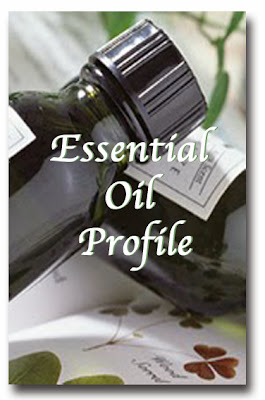Roman Chamomile, Anthemis nobilis

I have decided to focus on individual essential oils a couple of times a week. My first choice is chamomile, which is a very useful essential oil. It is also gentle enough for children.
Historical Uses
Chamomile was a sacred flower to the Egyptians who used the flower as an offering to the sun Good Ra. In the middle ages it was thought that chamomile was improving the air and it was scattered around the houses. Roman chamomile derives from the Greek word chamaimelon, melon means apple and chamai means ground. The name refers to its unique smell when it is fresh. The botanical name Anthemis means flower in Greek, and the name nobilis, which means noble, refers to its healing properties. Chamomile is a native of Western Europe.
Chamomile has a long history of being used for its therapeutic properties. Culpeper knew about chamomile's effect on the nervous system and he recommended it to comfort the brain and the mind. Chamomile was also used for digestive complaints, skin and mucus membrane irritations. Decoctions of the whole herb were used all over Europe.
Common names
The essential oil Roman Chamomile, ( Anthemis nobilis or Chamaemelum, nobile) is sometimes referred to as English Chamomile or Chamomile Romain. It belongs to the Asteraceae family. The toxic constituent is Pinocarvone. It may cause dermatitis so it is recommended to conduct a skin patch test prior to application of the oil. Chamomile is also contraindicated in the first trimester of the pregnancy.
Description
Roman Chamomile is a small perennial herb with hairy stem. The leaves are feathery and the flowers are white and somewhat larger than the German chamomile and they smell like apple. The flowers are steam distilled to make the essential oil.
Aroma
The aroma of chamomile is warm but it feels light and summer-like. Anthemis nobilis has a typical floral scent that brings back memories of picking wild flowers in the summers in Sweden. The aroma is very calming and relaxing. It makes me feel very relaxed and not stressed at all.
Roman Chamomile has no color and it leaves no residue on the blotter. If the essential oil is diluted with other substances I could tell by looking at the blotter, since a diluted oil may leave some residue which I know shouldn't be there for chamomile. Chamomile dries quickly when rubbed between the fingers but if it was diluted it might have left an oily residue.
Blends with
Chamomile blends well with bergamot, clary sage, geranium, lavender, lemon, sweet marjoram, neroli, orange, rose, rosewood, sandalwood, and ylang ylang.
This a good oil for psychological problems. According to Battaglia, chamomile has historically been used for children who might feel impatient or tense due to colic, teething, or flatulence. He also says it is a mild sedative without any depressing effect.
Therapeutic properties
According to Battaglia, chamomile also has anti-spasmodic and anti-inflammatory properties and it is more suitable than the German Chamomile for inhalation due to its higher ester content. Its anti-inflammatory properties are useful for the skin. According to Battaglia, hot or warm compresses may assist in healing abdominal pain, gall bladder and throat infections. He also says compresses are helpful for children when they suffer from colic. According to Battaglia, as inhalation Roman chamomile is helpful for tension and anxiety associated with asthma or hay fever.
Possible skin sensitivity. If pregnant or under a doctor's care, consult your physician. Dilution not required; suitable for all but the most sensitive skin. Generally safe for children over 2 years of age.
Before you leave:
I recommend that you always perform a skin patch test when you try a new oil on your skin.
Check out my safety page to make sure you are aware of any contrindications before you use essential oils. Some oils are not suitable when suffering from certain conditions. Also, Read this Before You Start Using Essential oils. Some oils should not be applied prior to sun exposure so make sure you check this list before spending time in the sun.
Not sure how to apply the oils? Visit these pages to learn how to apply the oils:
Not sure how to apply the oils? Visit these pages to learn how to apply the oils:
- Topical Application
- Inhaling Essential Oils
- Are You Diffusing the Oils Correctly?
- How to Dilute Essential Oils
- Vita Flex Technique
----------------------------------------------------------------------------------------------------------------------------------
Johanna is an aromatherapist and she is passionate about educating people about health, essential oils, real food, natural remedies, and nutrition so they make healthier choices in their lives.
Follow Johanna on twitter and facebook for more health tips and information.
Follow Johanna on twitter and facebook for more health tips and information.



























